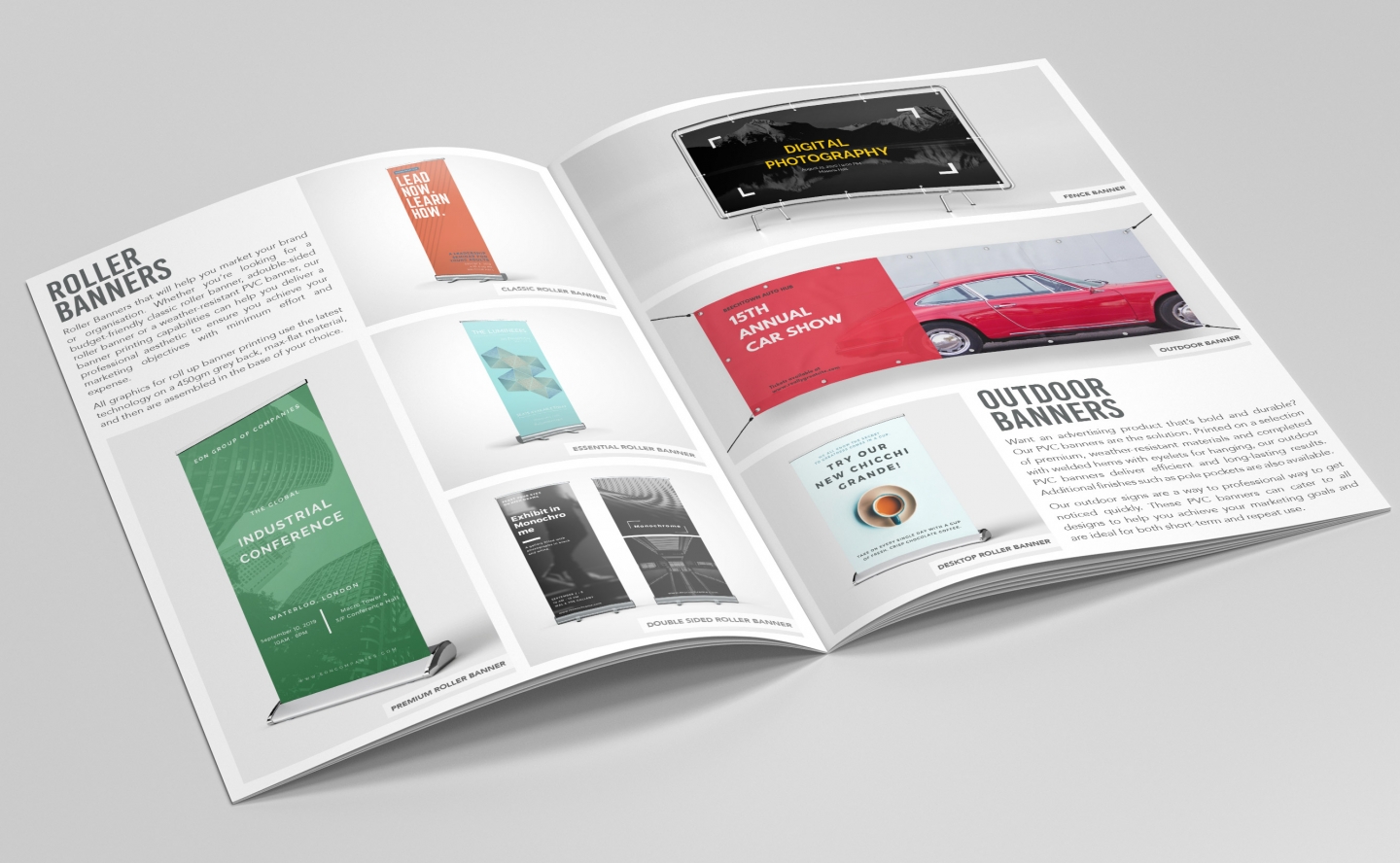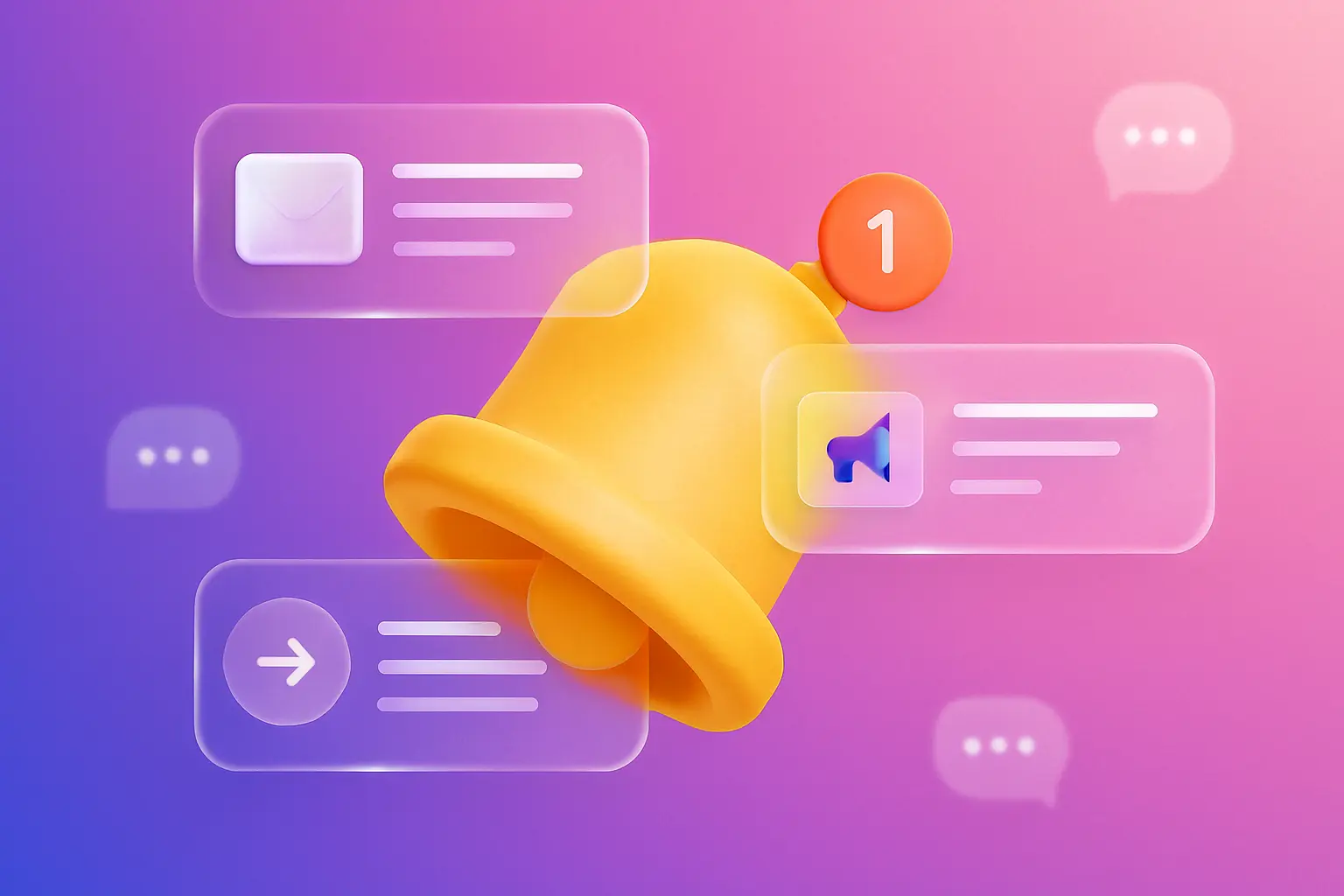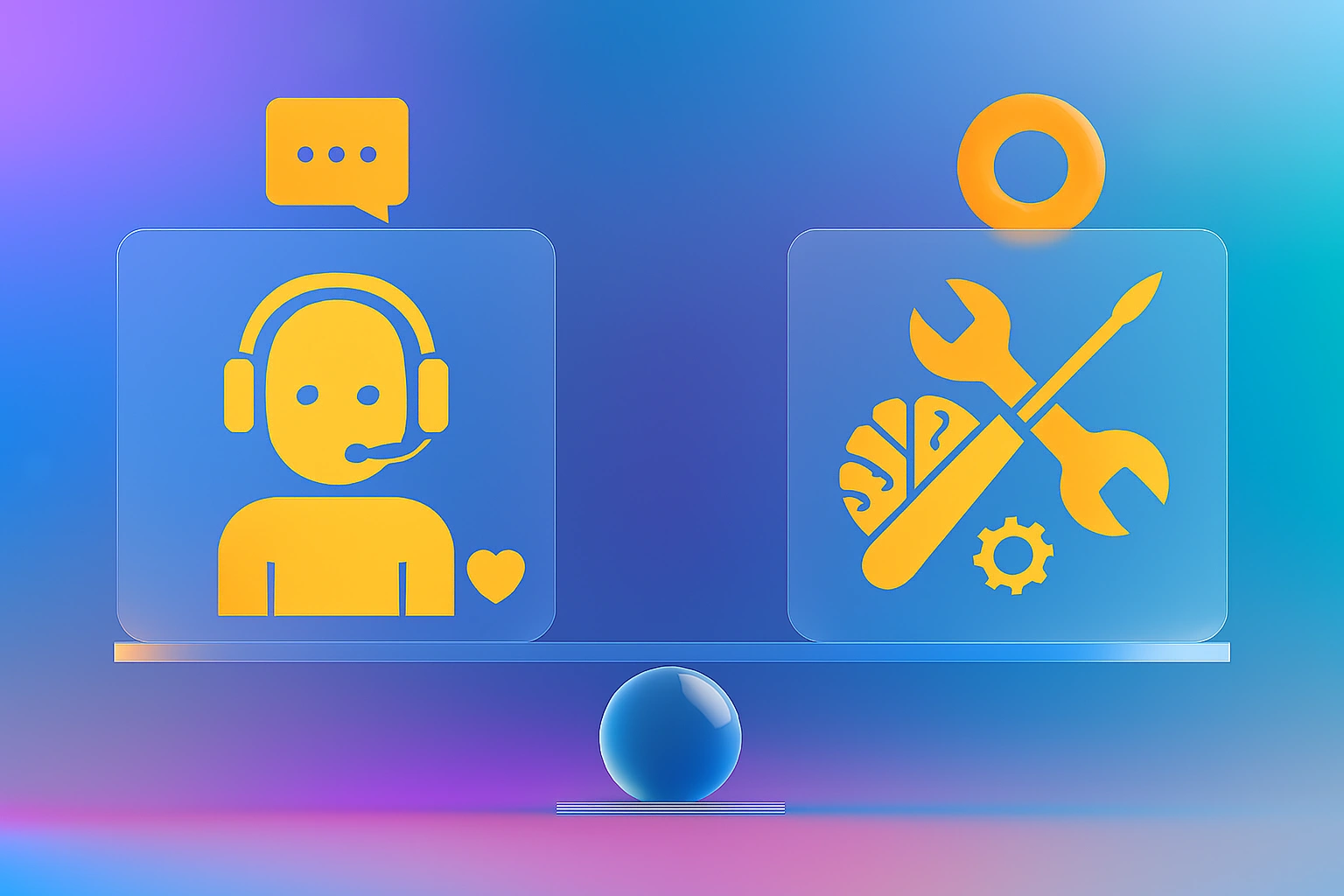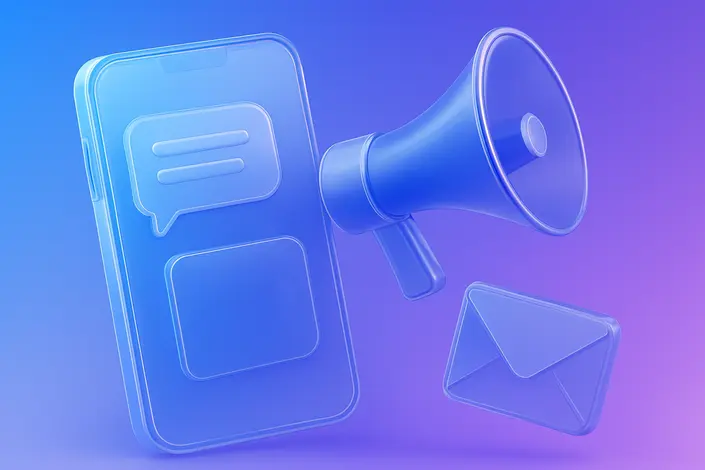How to Identify Customer Touchpoints? Types & Examples
- May 6, 2020
- 23 mins read
- Listen

Customer touchpoints are essential for any company that deals with the sale of products and services. Its goal is to get consumers to complete a conversion with your brand.
There are several interactions a customer makes with your brand before, during, and after purchase. Based on such interactions, customers often form the first impression of a brand and make an opinion about the product or service.
80% of customers say that the experience a company provides is just as important as its products or services (Salesforce), it’s clear that these interactions aren’t just steps—they’re make-or-break moments.
As a result, knowing your touchpoints and making sure that each of them leads to a good customer experience should always be a top priority for your business.
In this piece, I discuss what customer touchpoints are, and how you can identify them.
What are customer touchpoints?
Customer touchpoints are the interactions and communication between customers and the company throughout the journey and encompass all channels and moments where customers come into contact with a company’s brand, products, and services.
Why are the Customer Touchpoints Important?
Customer touchpoints provide interactions and encounters between consumers and the brand.
But what impact does that have on a company from a practical perspective?
We can start by considering these three reasons-
1. Customer touchpoints are the deciding factor for consumers from discovering a brand to becoming a loyal customer. There is no phase in this relationship with consumers that does not involve touchpoints, so how companies plan and create these moments can make or break their customer acquisition and retention results.
2. Customer touchpoints can be customized according to the demographics of individual consumers. That’s helpful for marketers and product developers because they don’t have to create just one monolithic path and miss out on consumers who may not interact with every single touchpoint just like companies expect them to do.
3. Customer touchpoints can help companies measure and track their progress. Companies recognize quickly how they might measure engagement with each medium, whether that’s video views, search rankings, time spent on a page, or clicks. And when they measure data from consumer touchpoints, they can curate content and refine their strategy for greater success.
Types of Customer Touchpoints
Every interaction a customer has with your brand—from social media to post-purchase follow-ups—shapes their experience. Let’s explore the key touchpoints that make an impact.
|
Before Purchase |
During Purchase |
After Purchase |
|
Social Media |
Store or Office |
Billing |
|
Ratings & Reviews |
Website |
Transactional Emails |
|
Testimonials |
Product Catalog |
Marketing Emails |
|
Word of Mouth |
Promotions |
Service & Support Teams |
|
Community Events/Involvement |
Staff or Sales Team |
Online Help Center |
|
Advertising |
Phone System |
Follow-Up Calls/Emails |
|
Marketing / PR |
Point of Sale |
Thank You Notes/Cards |
|
Blog Content |
In-Store Experience |
Customer Feedback Surveys |
|
Influencer Partnerships |
Online Checkout Process |
Loyalty Program |
|
Email Newsletters |
Chat/Support During Checkout |
Re-engagement Campaigns |
How to Optimize Customer Touchpoints?
Each of your touch points will have an effect on the overall customer experience. You thus need to have a clear idea about the touchpoints your potential customers will have before, during, and after purchase. Based on that, you can get a better understanding of the customer journey mapping and then optimize customer touch points.
Let us discuss the three stages comprising traditional and digital customer journey touchpoints and also understand how to optimize touchpoints.
Awareness- Marketing touchpoints
It is the very first stage when and how customers come to know about your brand? It could be through traditional or digital touchpoints in their journey. Let us discuss some common points of contact that fall under the awareness stage.
1. Website
A website is the most common touchpoint customers choose to reach out to your business. A well-designed site can make visitors want to stay longer and keep them more invested in what your company has to offer.
The main objective while designing a website is that it should leave a first good impression on your customers. Your website must have the right elements and components as they can grab your customer’s attention in the first go and also help attract them.

How to optimize a website?
- Design- Consider making your site visually appealing to give an overview of your products & services. Focus on hassle-free navigation between the menus. Good website design reduces the bounce rate and increases conversions.
- Clear messaging– You should highlight the core brand message so that your customers immediately understand what services or products your company sells.
- Social proof– Social proof in the form of testimonials, reviews, star ratings, and real-time statistics can be used on different web pages such as the homepage, product/service page, Contact Us, etc. It helps in validating their decision.
- Clear call to action (CTAs)- Consider placing a relevant CTA text. Keep it short and to the point which requires minimum effort to read. For example, Free trial, Buy now or Contact us.
REVE Chat is an omnichannel live chat platform that allows businesses to engage customers across their preferred channels in real-time at any stage of their journey. Sign up with REVE Chat connect with your customers and deliver the instant service they expect at any phase.
2. Live chat
Live chat has become one of the most important channels to interact with businesses. Customers prefer to live chat over the reactive channels as it provides immediate sales and support assistance.
When you address customer concerns in real-time, they are highly satisfied which reduces the bounce rate and increases sales conversions.

How to optimize live chat?
- Proactive support- With live chat, you can proactively start a conversation, when the customers are stuck on specific pages. It helps them in quick decision-making and reduces the bounce rate.
- Fast response- Live chat can help deliver faster responses to sales & support queries by using pre-drafted answers and connecting to the right team. It reduces the number of support requests raised by customers.
- Quick follow-up- Live chat can be connected with CRM tools so that the sales team can instantly follow up with prospects and ensure the best live chat customer experience.
- Conversations on pending requests- You can implement chatbots to collect visitor information which can help initiate the conversation with customers based on their previous or pending requests.
- Interactive resolution– Your business can combine live chat with co-browsing and video chat to enable the resolution of the query in an interactive manner. For example, REVE Live Chat provides co-browsing solutions and audio/video calls to create an interactive resolution.
3. Chatbots
Chatbots are being deployed by B2B and retail businesses mainly to deliver automated support and sales assistance. AI bots allow businesses to better assist their customer needs along their journey.
For example, with REVE chatbots, customers do not have to wait for human support. They get real-time answers to simple queries reported by them. It creates a good impression on customers of your brand being responsive.
How to optimize chatbots?
- Real-time assistance– By implementing chatbots, you can provide instant support without making customers wait.
- 24×7 availability– Bots are always active in engaging your customers by providing instant answers to common queries when your support team is not available or busy, which improves customer satisfaction.
- Reduce the number of support tickets- When bots are used as the primary contact, the repetitive queries are answered instantly, which reduces the number of support requests made by customers.
- Personify your brand– You can program chatbots with different types of conversational styles to boost customer engagement.
REVE Chat offers an automated platform to build and deploy chatbots and engage customers 24×7 across the customer journey touchpoints. Sign up today and deliver instant assistance to the common queries associated with the journey.
4. Social media
37% of social media users visit a brand’s page or like or follow a brand on social media.
Social media is clearly one of the vital touchpoints for customers to reach out to businesses. For millions, platforms like Facebook, Quora, LinkedIn or Twitter have become a preferred medium to find information or solve problems.
Social channels are naturally a great way to grow your audience and reach business goals through ads and active engagement. They also help businesses to connect well with customers, boost awareness about their brand, increase user engagement and boost leads and sales.

Source: Markerly
How to optimize social media?
- Create interactive content- You first need to understand your audience, their preference, etc. to create engaging content that they will like, comment on, and share.
- Social media as a communication channel- Using social channels as a mode of communication helps to track comments, questions, and complaints. By responding promptly to their concerns you can make them feel heard.
- Humanize your brand– Social media is ideally the best platform to humanize the brand with a bit of informality and causal discussion it helps boost the engagement level.
- Encourage engagement- You can encourage your customers to leverage new ways like posting Instagram Stories, hosting a quick Q&A session via Facebook Live video streaming, or creating engaging video content for social media to get a better idea of your followers’ preferences.
5. Events
Events or trade shows have been a popular way to market products & services. Taking part in events is a great way to build brand awareness, demonstrate industry influence, and generate sales.
In fact, 60% of leadership find events a vast significant marketing channel for achieving business goals.
The impact event marketing has on brands is incredible. People who attend a brand’s event are likely to give more value to that brand and view it more favorably over competitors.

How to optimize events?
- Target the right audience– Exhibitions as part of events cater to a specific category of products or services. You can draw the attention of the right audience with creative ideas.
- Tailor your content based on segmentation– You can use data from registration or CRM to create a customer profile and then tailor the content to create meaningful engagement with the audience.
- Offer immersive experience– Offer visitors an immersive and personalized experience through events that help maximize your potential to connect with the audience.
- Create 1-to-1 connections– People attend events to network with others and share their interests, so you should use events to facilitate one-to-one connections to ensure a better experience for customers.
6. Online advertisement
Online advertising helps you find the right audience. It targets the ones who are more likely to be interested in what you are selling.
Your business can leverage online advertising tools such as display ads, social media, or video ads to reach the target audience easily and generate leads.

How to optimize online advertisements?
- Understand your target audience– You need to understand the audience based on the geography, demographics and interests as this helps plan your ad campaigns accordingly for better engagement.
- Use a relevant landing page- Make the landing page relevant to the content that relates to the campaign as this will improve the quality score of your ads.
- A clear call-to-action (CTA)– Having a clear call-to-action means your ads offer the right visual guides to customers and solve their problems, which can reduce bounce rate and increase conversion.
- Educate your customers– Ads are the best way to tell customers about changes to your service, new product launches, and improvements. You can inform about special offers or a benefit of your product.
7. Customer reviews
Spiegel Research Centre says, “95% of shoppers read customer reviews before making a purchase.”
Reviews not only have the power to influence consumer decisions but can also strengthen your brand credibility. They can help gain trust by encouraging customers to interact with the company.

How to optimize customer reviews?
- Boost customer confidence– Customers not only find reviews helpful but also feel comfortable and confident about the products or services of your business.
- Improved customer service– Your business can analyze the reviews and understand the level of customer satisfaction, which can help improve customer service.
- Feedback mechanism– Customer reviews serve as a great feedback tool to understand the needs and pain points, resolve the issues and deliver a better experience.
Evaluation – Customer experience touchpoints
Mapping of the evaluation stage refers to when customers are impressed with your brand and have made up their minds to buy. With that intention, they start evaluating your product or services to make a final purchase.
Let us discuss how to identify and optimize customer touch points that fall under the evaluation phase.
8. Product demos
Customers generally use product demos as a touch point when they are satisfied with your brand and want to learn more about the specific features.
Product demos are an important B2B customer journey touchpoint to get a prospect interested and excited about your solution. They can also prove an effective way to address the prospect’s specific product-related concerns.
How to optimize product demos?
- Customize demos– You need to customize the product demonstration for each prospect and change the data and content to ensure an exceptional digital customer experience (CX).
- Provide visual support– Product demonstrations should provide the right kind of visual support, showcase real value, and convey the customer’s story rather than focusing only on the features.
- Show products from multiple angles– Customers always prefer video for product demos as this can help them see products from different angles and then make an informed decision.
9. Phone calls
The phone communication channel is one critical touch point that customers prefer a lot even after the advent of other digital channels.
B2B or retail businesses need to optimize their phone support quality in order to increase customer satisfaction. They should include phone support training in their customer service etiquette to meet and exceed customers’ expectations for service.
How to optimize phone calls?
- Train your support team to leave a good impression on your customers and deliver great service access via this popular client touchpoint.
- Agents should be courteous to ask customers how they prefer to be addressed and make an effort to pronounce their names correctly.
- Using active listening skills is key with a focus on allowing the customer to finish speaking before responding.
- Interacting with the customer with confidence is critical for ensuring that the conversation is both productive and effective.
- Agents must demonstrate a certain level of competence in order to adequately address the customer’s needs.
10. Product Catalog
Catalogs are an excellent way of showcasing your product & services to generate favorable responses from customers.
With an effective product catalog that has the right balance of layout and design, you can easily make your products look attractive and also make it easy for readers to find what they are looking for.
Customers use catalogs to get a perfect understanding of the product before making a purchase. That’s why make sure yours has the right kind of information and images to drive customer action.

Source: Wherethetradebuys
How to optimize the product catalog?
- Know your audience– By knowing who your specific audience is, you’ll be better able to adjust the style of the catalog: its language, layout type, and location of items on the page.
- Organize your products – Set your products into groups and decide where to put each group in the publication.
- Choose images– A well-written copy is of no value if the images are of bad quality. Select images that are of good quality or hire a professional to click top-quality pictures.
- Add CTAs on the page– A good catalog should have the product image with a crisp description, together with CTAs on the page to ease customers in carrying out the intended action.
11. Email
Email is one of the main channels of customer support for most B2B, B2C, or eCommerce companies. 62% of customers say they prefer email support to communicate with brands.
Email as a customer touchpoint affects everything from repeat purchase rates to lifetime value to how someone talks about your brand privately and publicly. You can leverage the power and reach of email to drive engagement and deliver a better customer experience.
How to optimize email touchpoints?
- Personalization– Personalizing emails based on the buyer’s journey, a past purchase, demographics, company size, etc. can help make customers feel like they’re doing business with a human, not a company.
- Create more opt-in chances– You can create more opt-in chances on the site, such as a blog newsletter sign-up form to improve the click-through rate of the campaign.
- Send a re-engagement email– By sending a re-engagement email, you can make a targeted attempt at stirring the interest of potential leads that may have gone cold.
- A/B test– Perform AB checks on different fonts, colors, CTAs, etc. to meet the audience’s preferences and gain key insights for future campaigns.
12. Retail store
Buyers will interact with retailers across multiple touchpoints, so delivering a consistent experience is always the key to success at the store. Plus, customers want in-person service, which is crucial to differentiate your store from the online store experience.
80% of customers say they are more likely to do business with a company if it offers personalized experiences.

Source: ourownstartup
How to optimize retail stores?
- All the touch points of the store need to be consistent so that they can help in building credible brand impressions
- Customers want personalized service from a sales associate and they are ready to share their personal details if it helps you provide a better experience.
- Many customers look for offers and coupons on their phones. They are more likely to shop at a store that has a mobile point of sale.
- You can give customers loyalty rewards and programs that allow them to identify shoppers via their smartphones when they are in-store.
Post-purchase – Customer service touchpoints
These are customer journey touchpoints that indicate what happens after the final purchase. It includes key points of contact like:
13. Newsletter
Newsletters are one of the best customer touchpoint examples for the value they deliver to customers. They are a great way to keep your customers informed and engaged through interesting content and valuable tips. Newsletters are to give customers updates pertaining to your business, products, and services.

How to optimize newsletters?
- Share product information– You can advertise your company’s new products and services in your newsletters, and explain the benefits of each product or service.
- Match customer lifecycle– New product information and triggered-based content can be sent to all your customers based on their journey.
- Showcase your achievements– Your business can increase customer engagement by highlighting your awards to your existing customers. It helps you to deliver the best digital service experience.
- Deliver great content– You can measurably strengthen subscriber engagement and even gain more repeat customers by delivering great content on a regular basis.
14. Feedback survey
Customer satisfaction surveys provide you the feedback you need to keep customers happy and turn them into advocates.
77% of consumers view those brands more favorably than seek out and apply/ incorporate/ value customer feedback.
How to optimize feedback surveys?
- Understand your customers– Surveys are best fitted to understanding your customers’ journey touchpoints, likes, dislikes, and where you need to make improvements.
- Decide the area of improvement– The real value of surveys is only realized when the company has the goals in mind and is really concerned about improving customer experience.
- Make your survey mobile-friendly– It’s important to have surveys that are easy to access and simple to navigate using multiple mobile devices as this will help them reach more customers and bring their opinions about your business.
- Ask just a few open-ended questions– keeping the survey short and asking just a few open-ended questions is the key to getting more customers interested in sharing details and insight for your business.
15. Customer loyalty programs
Loyalty should not only be appreciated but also rewarded. It is one of the important client touch points that you should be aware of.
So, rewarding loyal customers should be a core part of your customer loyalty programs. If your customer buys from you frequently or generates new customers for your business, they should definitely get something for it.
How to optimize customer loyalty programs?
- Focus on premium customers– Create early access programs for premium customers and invite them to special events to spread positive goodwill. You can feature them as customers of the week/month or give unadvertised discounts to surprise customers.
- Make customers feel appreciated– Personalized programs like rewarding on birthdays can make your customers feel like they have an emotional connection with your brand.
- Use innovative ideas– You can attract new customers with good reward programs like offering points or discounts for signup, or try something innovative like Sephora.

Sephora’s Beauty Insider rewards program boasts more than 17 million loyal members. The members make up as much as 80% of Sephora’s annual sales. Customers earn rewards for each purchase based on a traditional point system.
How to Identify Customer Touchpoints?
Identifying customer touchpoints is essential for understanding every interaction your customers have with your brand, from the initial awareness stage to post-purchase engagement. Here’s a practical guide to pinpointing these touchpoints effectively:
1. Map the Customer Journey
Start by visualizing your customer’s journey from the moment they learn about your brand to their post-purchase experience. This journey map will help you see the sequence of interactions they encounter, providing insights into both online and offline touchpoints. By focusing on stages such as awareness, consideration, decision-making, and loyalty, you can tailor your interactions at each step to meet their needs effectively.
2. Conduct Customer Surveys and Interviews
Gather direct feedback from customers to understand their experiences and interactions with your brand. According to recent studies, 79% of people are influenced by customer service interactions when considering future purchases, so knowing how customers perceive each touchpoint is critical. Surveys and interviews reveal valuable insights into which touchpoints are impactful and where there may be gaps to address
3. Monitor Online Reviews and Social Media
Many customers turn to online reviews and social platforms for insights before making purchasing decisions. This “social proof” stage acts as a powerful touchpoint; in fact, 95% of consumers say that reviews influence their purchasing choices. Monitoring platforms like Yelp, Google Reviews, and social media can help you identify what’s working well and where customers may experience pain points
4. Categorize Touchpoints by Purchase Phase
Divide touchpoints into pre-purchase, purchase, and post-purchase phases. This helps you identify and prioritize where to enhance interactions. For instance, pre-purchase touchpoints could include ads and blog posts, purchase-stage touchpoints might involve your website or sales team, and post-purchase could be customer support or follow-up emails. Focusing on touchpoints in this structured way can lead to a more seamless experience at each stage
5. Regularly Update Your Touchpoint Strategy
Consumer expectations evolve, so periodically review and adjust your touchpoints. For example, with 41% of customers now expecting live chat on websites, adding or enhancing chat functionality can be a timely update that aligns with customer expectations and improves engagement.
How to Build a Digital Customer Touchpoint Strategy?
Digital customer touchpoints are every point of contact a customer has with your brand online—whether that’s visiting your website, browsing social media, or interacting with chat support. Each touchpoint is a chance to make a strong impression and build customer loyalty. Here’s how to make these interactions meaningful and create a smooth, consistent digital experience.
1. Identify Key Touchpoints
Not all touchpoints have the same impact. Start by listing every digital interaction point, then analyze which ones matter most for customer satisfaction. Studies show that 70% of customers feel more connected to brands that provide a consistent experience across channels
2. Spot Engagement Gaps
Use analytics and customer feedback to find where customers may be dropping off or losing interest. This can reveal areas for improvement, like simplifying the checkout process or making your website easier to navigate.
3. Ensure Brand Consistency
Keeping a consistent brand voice and look across all platforms builds trust. A cohesive image across digital touchpoints increases brand recognition by 23% , helping customers feel connected to the same brand wherever they engage.
4. Personalize Experiences
Small personal touches—such as addressing customers by name or suggesting relevant products—make interactions more engaging. In fact, 80% of customers prefer brands that offer personalized experiences , which can deepen connections and increase loyalty.
By following these steps, you can create a customer-friendly digital touchpoints strategy that enhances every online interaction.
How to Improve Customer Touchpoints?
Improving customer touchpoints is essential to building trust and delivering a smooth, positive experience. Here’s how to enhance key touchpoints and identify areas needing improvement:
Request Feedback Proactively
Asking for customer feedback will help you spot any areas of friction at specific touchpoints along a customer journey map and allow you to determine where you need to change or improve to create a great overall customer experience.
Use Targeted Surveys
- Net Promoter Score (NPS): Customize NPS surveys for specific touchpoints to measure customer loyalty and identify issues. NPS feedback helps assess loyalty and guides improvements across individual or multiple touchpoints.
- Customer Satisfaction Score (CSAT): You can use Customer Effort Score (CSAT) surveys to ask customers about their satisfaction with a product or service they purchased. You can also send a CSAT survey to check that the checkout process is being handled correctly using customer satisfaction software. This will help you find out if they have any issues that you can resolve and increase customer satisfaction.
- Customer Effort Score (CES): You can also ask for feedback to measure customer effort throughout their journey. Reduced customer effort – that is, less friction at customer touchpoints – is a key factor in customer retention. With Customer Effort Score (CES) surveys using CES software, you can measure customer effort and take steps to improve it.
- Analyze Feedback for Optimization: Collect and analyze feedback from NPS, CSAT, and CES surveys to pinpoint specific areas that need optimization. Use this data to improve the overall journey.
Empower Customers to Resolve Issues
By helping loyal customers resolve issues along their journey, you show commitment to their experience and build trust.
Intentional, well-designed surveys reveal valuable insights into touchpoints that may otherwise go unnoticed, enabling continuous improvements for a great customer experience.
Hitting the Right customer touchpoints is vital for a great experience
Having a thorough touchpoint analysis across all three stages; before, during, and after purchase is vital to understand their preferences and expectations. It helps you in mapping customer journeys and leverages them in the right way to deliver a consistent support experience.
Mapping customer journeys across digital touchpoints is an important part as customers nowadays are using more digital channels. Hence, businesses need to focus more on the digital point of contact to deliver a great service experience.
REVE Chat is an omnichannel platform that will help you connect and engage customers across all the journey touchpoints. Sign up today and provide your customers the excellent service they expect from your business.
Frequently Asked Questions
Customer touchpoints are all the interactions a customer has with your brand throughout their journey, from first awareness to post-purchase support.
The five key touchpoints are awareness, consideration, purchase, service, and loyalty.
A great example is your website, where customers can learn about your product, explore options, and contact support.
In a customer journey map, a touchpoint is a specific moment where the customer interacts with your brand
The main stages are awareness, consideration, purchase, retention, and advocacy.
The steps are: define goals, create buyer personas, list touchpoints, map stages, identify customer needs, find pain points, and refine the journey.
A touchpoint is a single interaction, while a customer journey is the entire experience across all interactions.
Digital touchpoints include website visits, social media interactions, online ads, and email communications.
It often takes 6-8 digital touchpoints for a customer to make a purchase decision.
Digital touchpoints help build brand awareness, nurture relationships, personalize experiences, and guide customers toward purchase decisions




